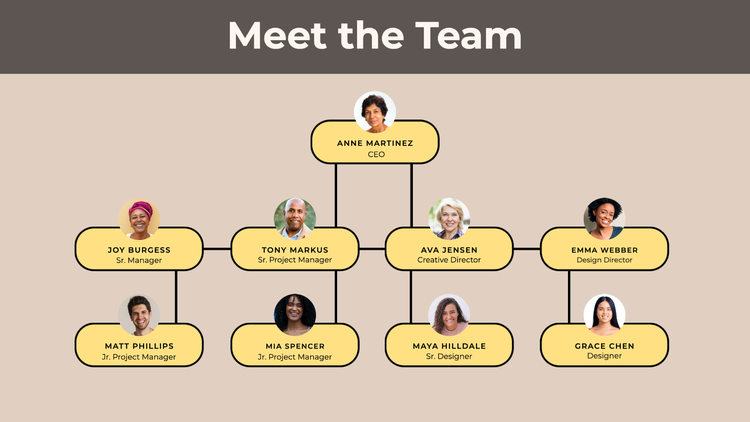15 org chart examples and free organizational chart templates

Summary/Overview
What is an organizational chart?
Organizational charts, commonly referred to as “org charts,” are diagrams that visually map out a company or organization’s internal structure with details pertaining to hierarchy, roles, and relationships between individual employees. They’re an easy way to learn about how an enterprise is designed and maintained on a human-to-human level.
Org charts are also helpful as a ready reference for employees to see where their coworkers and managers fit into the company structure in relation to them. Having an org chart can remove ambiguity in your team and improve communication between employees, thus demystifying the workplace and fostering a healthier community.
Treat org charts like a planning tool, as they can be used as a resource for visualizing company reorganization. You can choose to include additional information — like phone numbers, emails, or photos, so that org charts of your company can be treated like an employee directory.
The key thing to note here is that there’s no wrong way to construct an org chart. As long as your chart addresses the people, departments, and functions of your organization, then you’re well on your way to better understanding how each part of your org interacts with the other, and how to prioritize that understanding.
Organizational chart types
Functional top-down:
A functional top-down org chart shows the relationships between departments and their managers. It visually represents how employees can be segmented by responsibilities, skill sets, and specialties.
Matrix:
A matrix org chart organizes people or items based on their commonalities, such as managers they report to or skills they share. Because of this, matrix charts typically have multiple items that are interconnected, creating a web-like appearance.
Flat:
Also known as a horizontal org chart, the flat chart puts all people or topics represented on the same level, effectively giving them all the same power by positioning each entity equally.
Divisional:
A divisional org chart divides a company into specific quadrants and visually represents them in depth based on their special criteria. For example, this chart could lay out the company based on product types offered or geographic regions served.
Free Adobe Express templates of sample org charts
Explore more free org chart templates.














